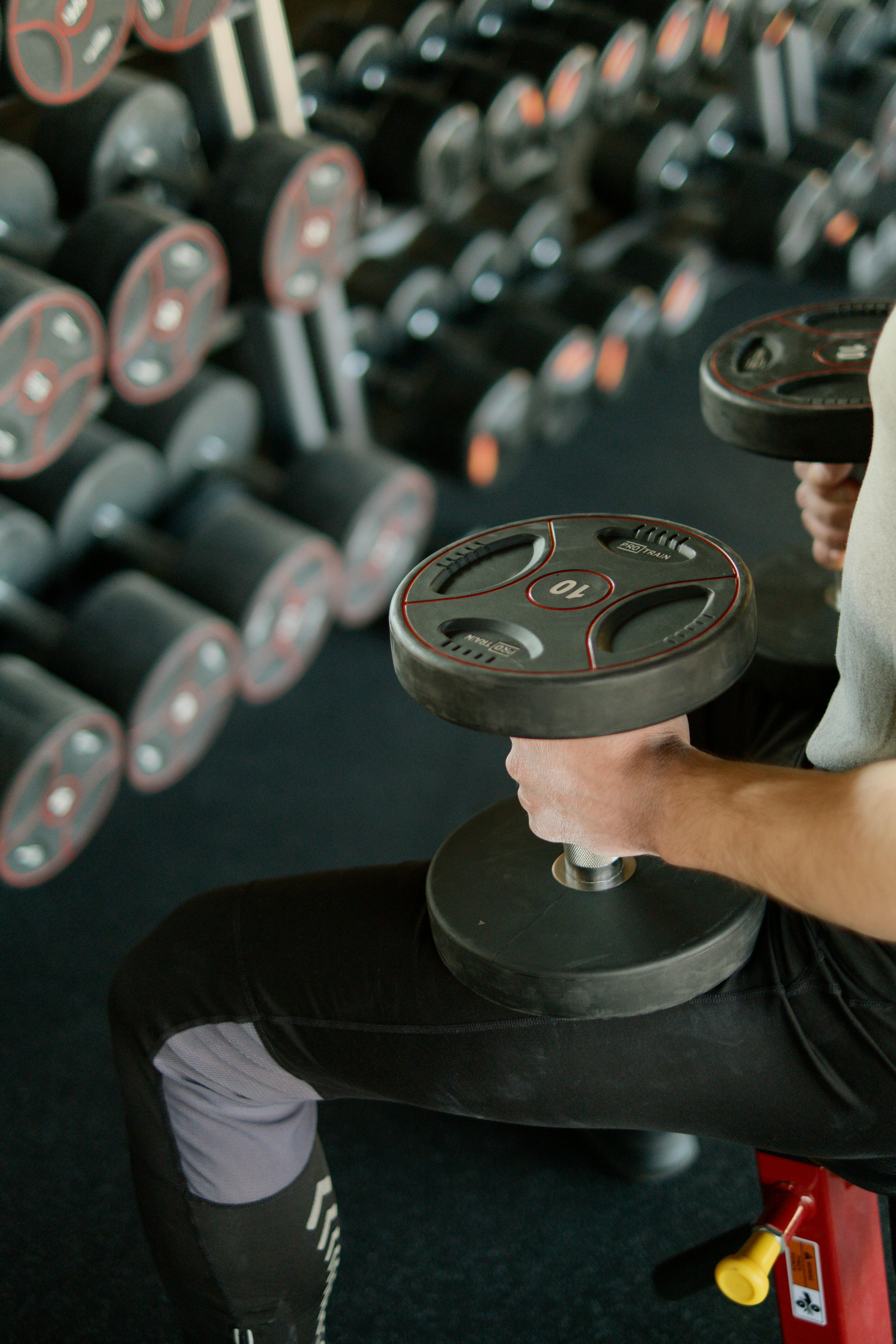The article, titled “Mastering the Hip Thrust: A Guide to Maximizing Your Gym Machine Workout,” aims to provide readers with a comprehensive understanding of the hip thrust exercise and its benefits in maximizing their gym machine workouts. By exploring the various elements of the hip thrust exercise, the author intends to offer readers a detailed guide to help them master this particular movement. Through this article, readers can gain insight into the benefits of incorporating the hip thrust exercise into their fitness routines, optimizing their time and efforts at the gym.
Mastering the Hip Thrust: A Guide to Maximizing Your Gym Machine Workout
The hip thrust exercise has gained significant popularity in recent years due to its ability to target and strengthen the glutes effectively. Whether you are a seasoned gym-goer or a beginner, incorporating the hip thrust into your workout routine can yield numerous benefits. In this comprehensive guide, we will delve into the various aspects of mastering the hip thrust exercise, including understanding its mechanics and benefits, choosing the right machine, setting it up correctly, maintaining proper form and technique, implementing progressive overload, training frequency and volume, exploring variations for targeting specific muscles, identifying common mistakes to avoid, and finally, providing some useful workout tips and suggestions.

Understanding the Hip Thrust Exercise
The hip thrust exercise primarily targets the gluteal muscles, consisting of the gluteus maximus, gluteus medius, and gluteus minimus. It involves lifting the hips off the ground or a platform and extending them to a fully contracted position, using either a barbell, resistance bands, or a dedicated hip thrust machine. By activating the glutes to a higher degree compared to traditional lower-body exercises like squats and lunges, the hip thrust provides a more focused and intense workout for these muscles.
Benefits of Incorporating the Hip Thrust in Your Workout
Including the hip thrust exercise in your gym routine offers several benefits. Firstly, it can help strengthen and develop the glutes, leading to improved athletic performance and overall lower body strength. Strong glutes can enhance hip stability, increase power production, and optimize movement patterns. Moreover, the hip thrust can also contribute to improving posture and reducing the risk of lower back pain by promoting proper alignment and engagement of the core muscles.

Choosing the Right Hip Thrust Machine
When it comes to hip thrust exercises, various machines are available in modern gyms to facilitate and optimize the movement. The selection of the hip thrust machine depends on factors such as cost, gym budget, space availability, and personal preferences. It is important to compare the different machines and their features to identify the most suitable option. Look for machines that provide proper support, stability, and adjustability to accommodate varying body sizes and exercise intensities.
Setting Up and Adjusting the Hip Thrust Machine
Proper set-up and adjustment of the hip thrust machine are crucial to ensure an effective and safe workout. Begin by positioning the machine on a flat, stable surface and setting the desired resistance level. Adjust the foot platform height and align it with the hips to maintain a 90-degree angle at the knees. Additionally, modify the backrest angle to ensure proper alignment of the spine during the exercise. Paying attention to these details will help optimize the movement and reduce the risk of injury.

Proper Form and Technique for the Hip Thrust Exercise
Executing the hip thrust exercise with proper form and technique is essential for maximizing its benefits and minimizing the likelihood of injury. Start by sitting with your back against the backrest and your feet resting on the foot platform. Engage your core and glute muscles, then drive through your heels, lifting your hips upward until your body forms a straight line from your knees to your shoulders. Squeeze your glutes at the top of the movement, then lower your hips back down in a controlled manner. Maintaining a neutral spine, avoiding excessive arching or rounding, and focusing on the glute muscles throughout the exercise are key elements of proper form.
Progressive Overload and Increasing Resistance
To continually challenge and stimulate muscle growth, progressive overload is crucial in any strength training exercise, including the hip thrust. Aim to gradually increase the resistance or weight used during the exercise as your strength improves. This can be achieved by adding additional weight plates, resistance bands, or utilizing a barbell with progressive increments. By gradually increasing the load placed on the glute muscles, you promote adaptation and stimulate further growth and strength development.
Effective Training Frequency and Volume
Determining the appropriate training frequency and volume for the hip thrust exercise is essential for optimal progress and recovery. It is generally recommended to train the glute muscles at least two to three times per week, allowing for adequate recovery between sessions. However, individual variations and goals can influence the optimal frequency. The volume, defined by the number of sets and repetitions performed, should be tailored to one’s fitness level and experience. Beginners may start with two to three sets of 10-12 repetitions, gradually increasing both sets and repetitions as they progress.
Hip Thrust Variations for Targeting Specific Muscles
While the hip thrust primarily targets the gluteal muscles, various variations can help emphasize specific areas or provide a new stimulus to the muscles involved. Single-leg hip thrusts, banded hip thrusts, elevated hip thrusts, and sumo stance hip thrusts are just a few examples of variations that can target different parts of the glutes, hamstrings, and even the quadriceps. Incorporating these variations into your workout routine can ensure a well-rounded and comprehensive development of the lower body muscles.
Common Mistakes to Avoid
Even with a comprehensive understanding of the hip thrust exercise, it is important to be aware of common mistakes that can diminish its effectiveness or lead to injury. Some common errors include excessive arching or hyperextension of the lower back, failure to engage the glutes fully, improper foot placement, and excessive reliance on the arms or upper body for assistance. Remember to maintain proper form and technique throughout the exercise, focusing on engaging and activating the glute muscles while minimizing strain on the lower back.
Hip Thrust Workout Tips and Suggestions
To further enhance the effectiveness of your hip thrust workouts, consider implementing these tips and suggestions. Firstly, ensure adequate warming up before performing the exercise to prepare the glute muscles and associated joints. Incorporating dynamic hip stretches and activation exercises can help improve range of motion and muscle recruitment. Additionally, incorporating tempos, pauses, and isometric contractions within your hip thrust routine can provide additional challenges and stimulate muscle growth. Lastly, don’t forget to listen to your body and prioritize recovery, allowing for proper rest and nutrition to optimize the results of your hip thrust workouts.
In conclusion, mastering the hip thrust and incorporating it into your gym machine workout can lead to significant improvements in glute strength, overall lower body development, and athletic performance. By understanding the mechanics, benefits, and proper technique of the hip thrust exercise and implementing progressive overload, individuals can optimize their training and achieve their desired fitness goals. Remember to choose the right hip thrust machine, set it up correctly, pay attention to proper form and technique, explore variations for targeted muscle development, avoid common mistakes, and follow the tips and suggestions provided. With consistent effort and a well-designed hip thrust workout routine, you can maximize the benefits of this effective exercise.

